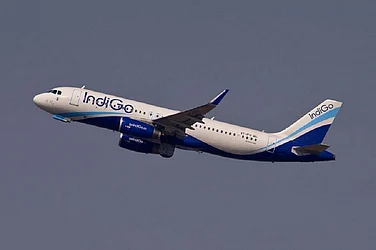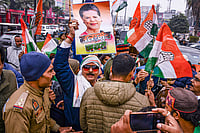When Anand S. Bisht had cataract surgery in both his eyes, he took the advice of the government hospital doctor and opted for imported lenses worth Rs 8,000 each. Altogether, he spent Rs 20,000. Bisht admits that India-made lenses would have cost less than half the price, but did not want to upset the doctor as he did not have to spend anything on the procedure in a government hospital. In a private hospital, a cataract operation in one eye alone can cost anywhere from Rs 20,000 to Rs 35,000.
In sharp contrast, at the Aravind Eye Hospitals in south India, this costs less than Rs 2,000, points out S. Srinivasan, co-founder and managing trustee of LOCOST, the Gujarat-based low-cost drug manufacturing company.
“Partly it is overcharging by the hospital and partly patients are made to feel the imported product is better than the Indian product,” says Srinivasan, a member of the All India Drug Action Network (AIDAN). He stresses that imported medical devices cost at least two to three times more than their import price. In the case of implants like cardiac stents, the MRP is more than eight times the landed cost.
Despite the government’s Make In India push, including through 100 per cent FDI, manufacturing of medical devices has not progressed much. One reason is that multinational firms are not manufacturing here. Sans any monitoring, they are only marketing their imported products. Medical devices and component imports last year amounted to Rs 25,540 crore.
Rajiv Nath of the Association of Indian Medical Device Industry (AIMED) holds government policies responsible for the low levels of domestic manufacturing. He says that the draft policy on medical devices manufacturing, which had been submitted to the PMO after consultations with the industry lobbies, has been gathering dust since June 2015. Further, the industry demand for “nominal protection of 10 per cent”—higher taxes for imports—has been partly met with a duty on 78 devices being raised to 7.5 per cent.
On FDI, Nath is critical of the fact that the government gave in to pressure to allow investments in brown field projects (existing companies), “as it allowed multinational firms to cherry-pick and take over many among 50 of the Indian companies with a turnover of over Rs 50 crore.”
Since 2010, there have been 23 mergers and acquisitions, attracting around $429 million investments in the sector. For instance, Smith & Nephew acquired Adler Mediquip, and Terumo Corporation bought out promoter Terumo Penpol Ltd. Similarly, Peter Surgicals SAS acquired Stericat Gutstrings Pvt Ltd and Cipla acquired Precision Pharmaceuticals.
“MNCs are only setting up distribution companies and have been lobbying for a cut in import duties,” says Nath. “The prime minister has been talking about Make in India, but the policy is working to the contrary.” Industry players say that unlike the auto or telecom industry, the medical devices industry does not enjoy any protection either in terms of duties or through a “Buy Indian” policy.
Last month, PM Narendra Modi had publicly mentioned that 70 per cent of medical equipment used in India are imported. “This situation has to change because it makes treatment costly,” Modi had said. Yet, the much-awaited law on medical devices has not moved beyond the draft bill stage.
Currently, apart from the dominating MNCs, there are three categories of domestic manufacturers. The first are those who hold manufacturing licences issued by the Drugs Controller of India, and conform to quality standards both in raw material (imported) and manufacturing. Their products are 40 per cent cheaper than imported products. The second category are those, also licensed, but who don’t conform to quality standards. Their pricing is 40-45 per cent cheaper than the best Indian manufactured products. Lastly, there are unlicensed manufacturers whose products are priced 30-40 per cent less than the second category.
“The best Indian manufacturers are able to sell their products at a low rate as their overheads and margins are lower compared to firms in the US or EU,” says Vivek Mangalwedhekar, director, SH Pitkar Orthotools, who make orthopaedic medical devices. “It is expected that within a year or so, the DGCI will clamp down on units not complying with quality norms.”
The advantages of boosting domestic manufacturing can be gauged from a simple example. Indian manufacturers supply around 70-75 per cent of the domestic requirement of intraocular lenses. Some leading eye hospitals, including Aravind Eye Hospitals, Dr Shroff’s Charity Eye Hospital, Venu Eye Institute and LV Prasad Eye Institute, all use Indian-made products. “Imported lenses cost double or even thrice more than Indian products. There seems to be no difference in quality too, as most Indian firms are ISO- and CE-certified and accepted globally,” says a senior eye-specialist. He adds that Indian companies have helped bring down the cost of cataract operations and made it affordable for the poor.
The cost of imported medical devices and thereby the mark-up varies largely depending on the type of device, says Dinesh A. Peter, business consultant, Life Sciences Practice, mentioning glucose-monitoring handheld devices and the relatively new transcatheter heart valve or the ventricular assist devices.
“A large number of glucose-monitoring devices have permeated the Indian market and the mark-up between the imported and indigenous devices is not substantial and is easily overlooked due to the growing purchasing power, at least in metropolitan cities,” says Peter. “However, when it comes to life-supporting critical devices new to the Indian market, such as the transcather heart valve or the ventricular assist devices, the mark-up is huge. You can google and find out that an imported ventricular assist device costs about Rs 1 crore, while it would be around $80,000 (Rs 51 lakh) in the US,” he says.
These devices are sold at either the same price as that in their country of origin, or more, depending on the device and its specifications. There are no indigenous alternatives and only the affluent few can afford them, though many Indian patients could benefit from these critical devices. Peter stresses that to truly expand in India, either the foreign manufacturers should lower prices or domestic firms should produce devices at a lower cost, thus putting pressure on imports.

The plant of Hindustan Syringes & Medical Devices Ltd
Pradeep Sareen, GM (marketing), Hindustan Syringes & Medical Devices Ltd, blames corporate hospitals for the spike in MRPs. Earlier, he says, the retailer used to get the biggest margin in the supply chain; now hospitals get the biggest share. “Corporate hospitals are the biggest culprits for the hike in margins at various levels. The government is only insistent on the MRP (that is, labelling). The MRP has been jacked up only in the last 5-6 years, after imported products entered corporate hospitals,” Sareen says. He substantiates his point by citing the example of syringes with needles, which saw no change in MRP for 20 years. “But with the advent of imported products, we have been forced to increase the MRP to remain competitive, as the margin on imported products are much higher,” he adds.
Some imported products are priced differently in the open market and much higher when supplied through hospitals. One such case, related to disposable syringes with needles, has been under scrutiny by the Competition Commission of India for three years.
The experience of OECD countries suggests that with increasing dependence on medical technology in health, costs of healthcare provisioning have gone up. For example, during 2006-2015, there was a 100 per cent growth in x-ray and ultrasound charges in India, points out Pritam Datta, research associate, Public Health Foundation of India. “To encourage domestic production, the government needs to provide fiscal space for them by offering a lower customs duty and excise duty on required raw materials and components than finished medical devices,” states Datta.
Voicing similar views, Peter talks about the need to incentivise indigenous manufacturers by providing tax breaks and address the import-export tax duty anomaly that hinders the import of cheap raw materials so that Indian products can truly compete with foreign ones.
In addition, there is a critical need to ensure that the new medical device rules, which will come into effect from January next year, are implemented rigorously to address quality issues associated with local manufacturing. Only a change in market perception and push in indigenous research can boost the demand for local products. Else, Indian manufacturers will continue making low-cost, simple devices, driving us into the arms of foreign products, their MRPs massively marked up by our own hospitals, thus robbing us of affordable healthcare.


























